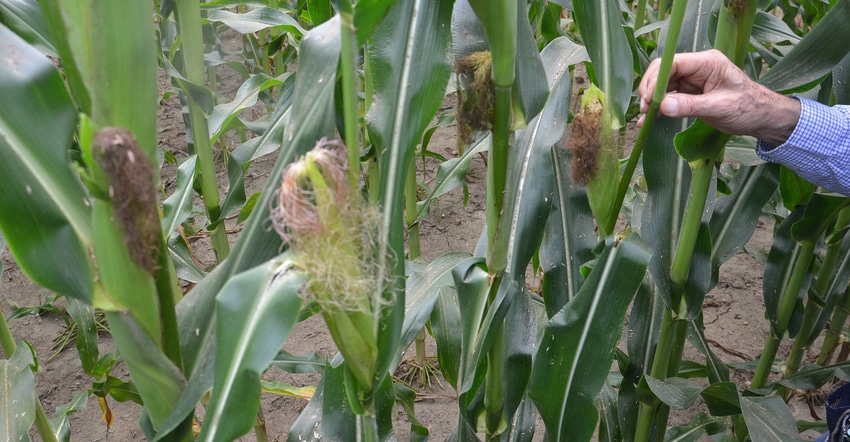
Uniform emergence may be more important to obtaining top corn yields than many people once thought. It’s a hot topic at field days this summer.
Dave Nanda contended for a long time that when corn plants don’t emerge evenly, yields suffer. How much depends upon how many plants emerge late and whether these plants produce an ear that makes some contribution to yield.
“If you have barren plants because they came up late, they’re worse than weeds,” says Nanda, a former plant breeder who is now an independent crop consultant based in Indianapolis. Nanda scouts the Corn Watch ’18 field on a regular basis. Corn Watch ’18 is sponsored by Seed Genetics-Direct, Washington Court House, Ohio.
Why late emergers hurt
If late-emerging plants don’t produce an ear, they’re worse than weeds because you can take out weeds with herbicides, Nanda says. There is no way to take out plants of the same hybrid that emerge late. Yet they compete with their neighbors for sunlight, water and nutrients just like weeds do.
Even if a late emerger produces half an ear, yield suffers, Nanda says. A full ear may produce 600 to 800 kernels, depending upon hybrid and planting population. A “half ear,” or smaller ear, produced by a plant that can’t compete as well because it got a late start may have 300 to 400 kernels. It’s taking the spot of a plant that should have produced 600 to 800 kernels like other plants emerging on time.
Many sources suggest that 1,000 ears, or one ear in 1/1,000 acre in a yield estimate count, represent 7 bushels per acre. If that’s correct, then replacing an ear with half an ear costs 3.5 bushels per acre. Even at $3.60 per bushel, that’s $12.60 per acre less revenue.
If the plant is totally barren, then one late emerger per 1/1,000 of an acre costs you $25.20.
Possible causes
One of the obvious causes of late emergers is an issue related to planting. Perhaps some seeds weren’t placed at the same depth. If a seed was planted shallower than its neighbors, for example, it may have been placed in dry soil while other seeds were in ample moisture. The seed in dry soil wouldn’t germinate as quickly, perhaps not until it rained.
Other factors can cause seed to be placed at uneven depths, including bounce within the seed tube. Fortunately, there are solutions on the market for some of these issues. Keeton seed firmers, for example, can make sure seeds are placed evenly in the bottom of the seed trench.
Precision Planting introduced a high-tech solution this year. SmartFirmer fits where Keeton seed firmers attach, but it contains an electronic eye that monitors conditions in the seed trench.
One of the four main variables the SeedFirmer measures is moisture content. It instantly relays information to the 20/20 SeedSense monitor in the cab. If the moisture content is too low for good germination, the operator has the option of adjusting depth, either on all rows or on rows represented by the reading. At least for the introduction year, many people who tried the SmartFirmer technology installed it on every fourth or sixth row.
Your last chance to scout for such things as late emergers and make changes for next year is before the combine rolls, Nanda notes.
About the Author(s)
You May Also Like




